Loot and the Fomori: The Lore Behind the Latest, Cutest (and perhaps most dangerous) Character in Magic: The Gathering
Very few recent characters captured our attention like Loot. Introduced in Outlaws of Thunder Junction (2024), Loot appears to be a pup.
However, despite his adorable appearance, he is described as "the key to everything", and capable of understanding Omenpaths - mystic, interplanar paths that redefined the Multiverse after the events of March of Machines.
Our Protagonist
Loot is a Fomori creature with an unknown past. He is, apparently, unlike anything in the Multiverse, and has unique abilities. Loot has orange fur, dark horns, big green eyes, and a tail with a blue orb at the tip where part of his power is stored.
He represents a link between ancient times, distant planes, and a forgotten lineage: the Fomori.
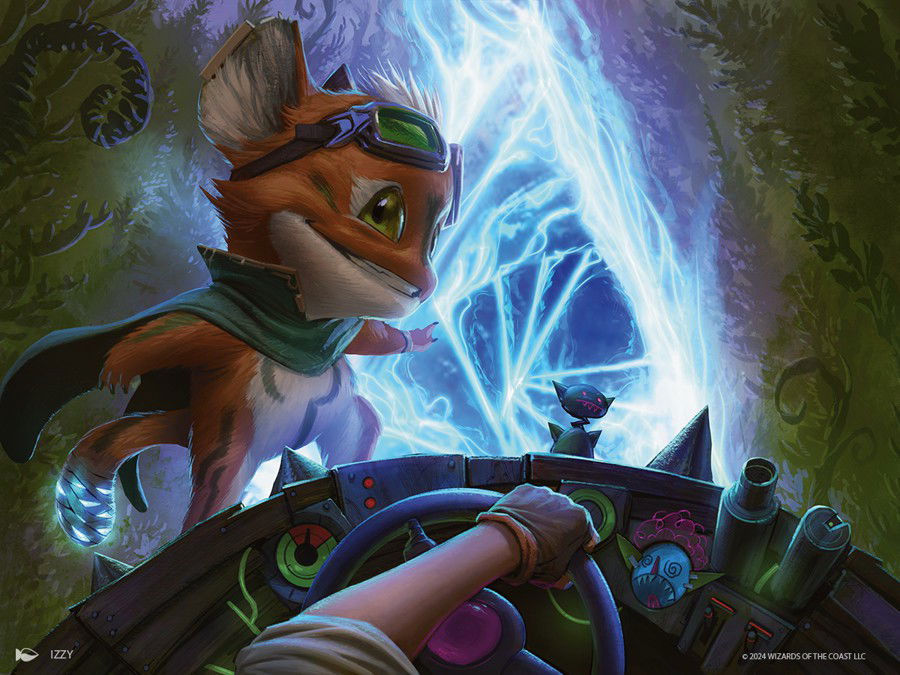
Ad
Introduction: The Story of the Fomori As Told By the Cards
The Fomori are an old, enigmatic race that has existed in the lore since before -5000 AR (so, thousands of years before most known events). It was only in recent sets that Fomori characters started appearing again. Their return to the main storyline is a modern reinterpretation of a forgotten race with a deep mythology and important connections to classic planes, like Ixalan and Ir.
From the first time they appeared, in 2007, to the most recent developments, in 2024, the Fomori have evolved from simple creatures to a complex civilization.
Their First Appearance: Future Sight (2007)
The Fomori first showed up in the Future Sight set, from the Time Spiral block, with a card called Fomori Nomad. This card represents a giant creature with a huge body and monstrous characteristics, but it didn't show us a lot about its origin at the time. The card itself hinted at an ancient race or culture, but without any context or deep narrative surrounding it.
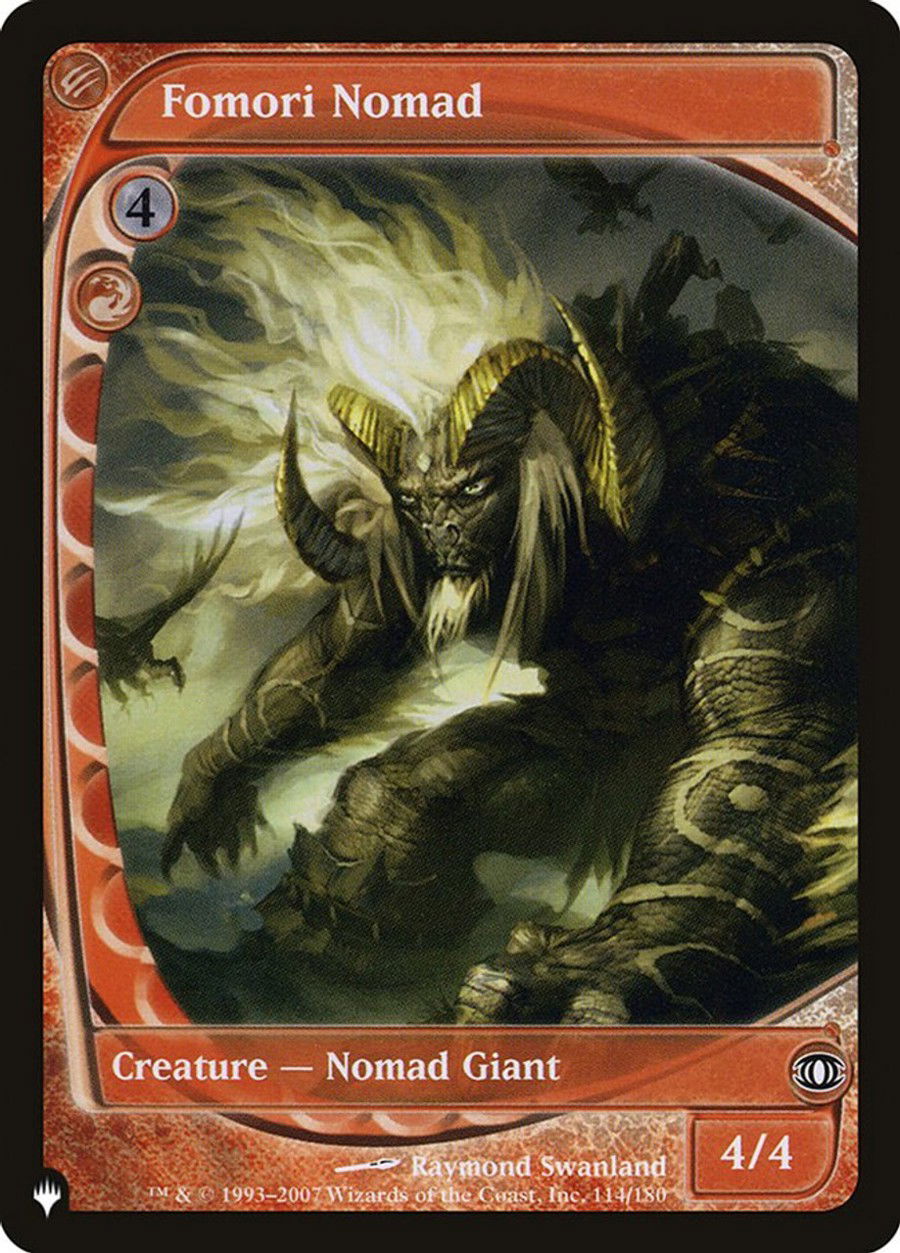
Their Second Appearance: Commander 2011 - Ruhan of the Fomori
The next time we saw this race was with Ruhan of the Fomori, a legendary commander from the Commander 2011 set. Ruhan is an isolated character, but his connection to the Fomori brought us new leads. He introduced the idea of a war-like culture for the Fomori, still surrounded in mystery.
Ad
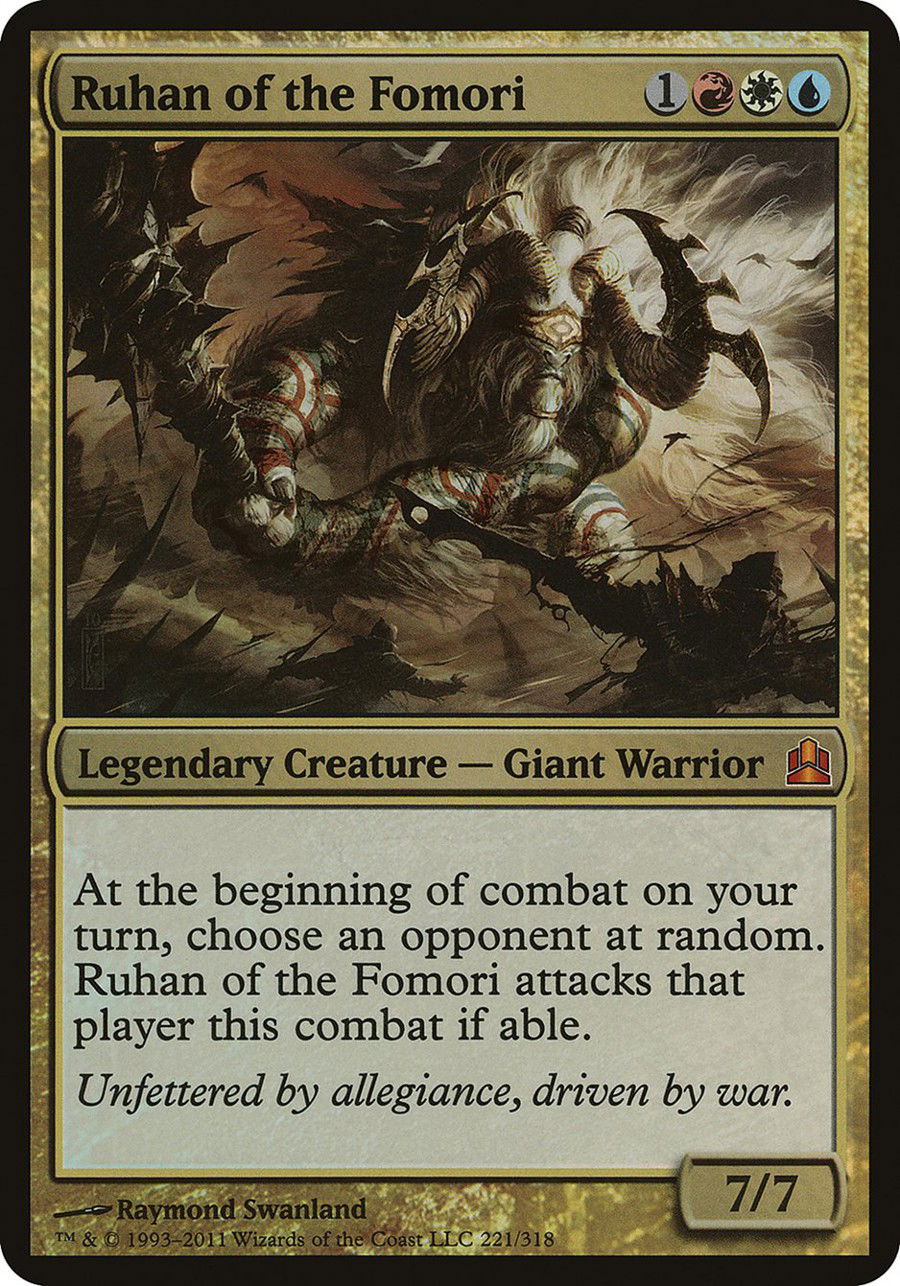
The Fomori Civilization: The Coin Empire
We only got to explore the history of the Fomori years later, when it was revealed that they were part of an ancient civilization called The Coin Empire, discovered by the planeswalker and archaeologist Quintorius Kand. This revelation occurs at different moments through this character himself, Tamiyo, Jace Beleren, Vraska, and Saheeli Rai. As they found out, this civilization originally came from Ir, more specifically from Turri Island, a huge fortress described as a "mana haven". The Fomori could travel between planes, and, apparently, were quite aggressive interplanar colonizers.
In the Lost Caverns of Ixalan, the Fomori are called Kisik, or "Colonizers", and are described as massive human-like beings with gray skin, horns, thick legs, and huge hands that "end in curved talons". Their armor was rust-colored, and their ships were huge, semicircular, metallic structures made of a single piece of metal called cosmium, associated with a sort of "technomagic". These ships had multiple floors, high ceilings, and oblong furniture. In their lower levels, massive tanks held the Fomori in stasis, asleep. These ships were also where the Fomori stayed when they occupied the Core of Ixalan, and were even more advanced, technologically speaking, than Thran and Phyrexian artifacts.
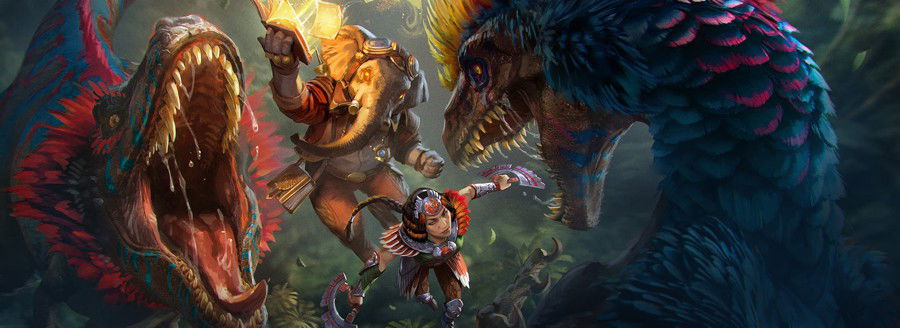
Historically, the Fomori came to Ixalan much before the Phyrexian invasion, seeking asylum. Once the Oltec denied their request, they quickly turned aggressive. They captured Chimil, the Inner Sun, the source of mana and life in this plane. Then, they surrounded this sun with their metallic, "technomagic" structures, and triggered the Night War, a 320-year conflict between the Fomori and the Oltec.
The war only ended when Chimil was freed, and the sun destroyed its own prison. The cosmic metal this prison was made from combined with the wreckage of the ships and formed a reef around the sun.
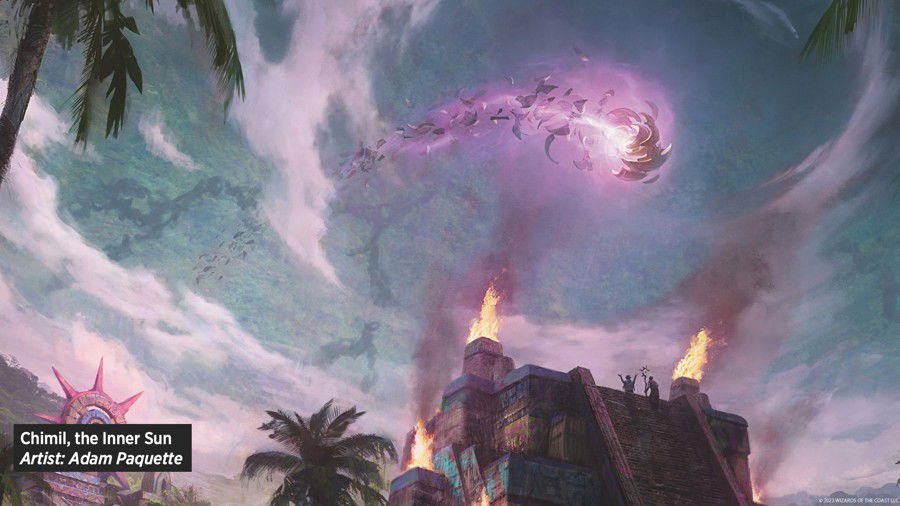
Ad
Some time after the Fomori were driven off Ixalan, the Coin Empire collapsed for reasons unknown. Coin-like relics, ruins, and vaults were scattered throughout many planes, including structures like Maag Taranau. Many forgot the empire ever existed, but a few scholars, like Tamiyo, preserved its history through oral tradition and artifacts.
About the Oltec
The Oltec are the ancient human civilization that inhabits the Core of Paradise, the inner part of Ixalan's hollow sphere. They're considered direct descendants of the Sun Empire and guardians of the secrets and technology behind the Core. They live in harmony with nature and the Deep Gods.
The Oltec are an advanced, spiritual civilization whose existence is inherently connected to the balance of Ixalan's Core. Their culture combines magic, technology, and a deep connection with the Gods. They're a vital part of their plane.
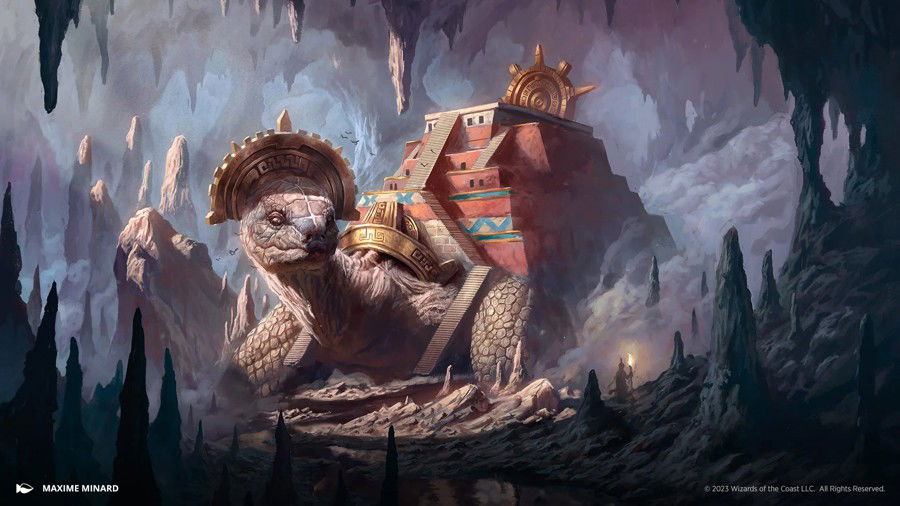
Rediscovered by Planeswalkers
Tamiyo and Jace Beleren
Two years before the Phyrexian Invasion, Tamiyo told Jace Beleren some information regarding the "Coin Empire", as she had discovered historic records and other traces during her travels. Jace had already investigated the Fomori Vault in Tezzeret's orders because Nicol Bolas was greatly interested in what was in it - something even he feared. Jace couldn't open the vault then, but he suspected something alive was sleeping inside. After the War of the Spark, in a new conversation with Tamiyo, Jace discovered the vault belonged to a lost, yet technologically advanced, civilization.
Ad

Quintorius Kand's Investigation
One year after the Phyrexian Invasion, Quintorius Kand found mysterious coin-like symbols as he journeyed through different planes. Intrigued, he starts calling them relics of the "Coin Empire". Saheeli Rai then contacts him and tells him she has found similar relics in the caverns below Orazca, in Ixalan. When he visited this plane, Quintorius confirmed the symbols Saheeli Rai found on Oltec tablets were, indeed, identical to the symbols he had found.

During his expedition to the Core of Ixalan, Quintorius found a Fomori corpse, and, after speaking with the Oltec elders, he learned about the old invasion. In Colony's End, where one of the invading ships fell, he found more coins and another Fomori held in stasis, in a capsule. When he got close, however, the creature moved and prompted him to escape.
These discoveries were critical to piece the history of this empire together.
Loot: Living History and Planeswalker
We don't know if all Fomori are like Loot or if, even among his equals, he is special. What we do know is that this little guy has a highly developed psyche that can see multiple paths between the planes at the same time, and that he can activate ancient artifacts as if they were a natural extension of his own body. This has made him the target of many unseen enemies, from thieves to demons.
Ad
Despite all his power, Loot is still a child. He doesn't speak, but communicates through gestures and some basic telepathy. His constant curiosity and empathy charm anyone who meets him - even if they just want to use him for their own selfish intentions.
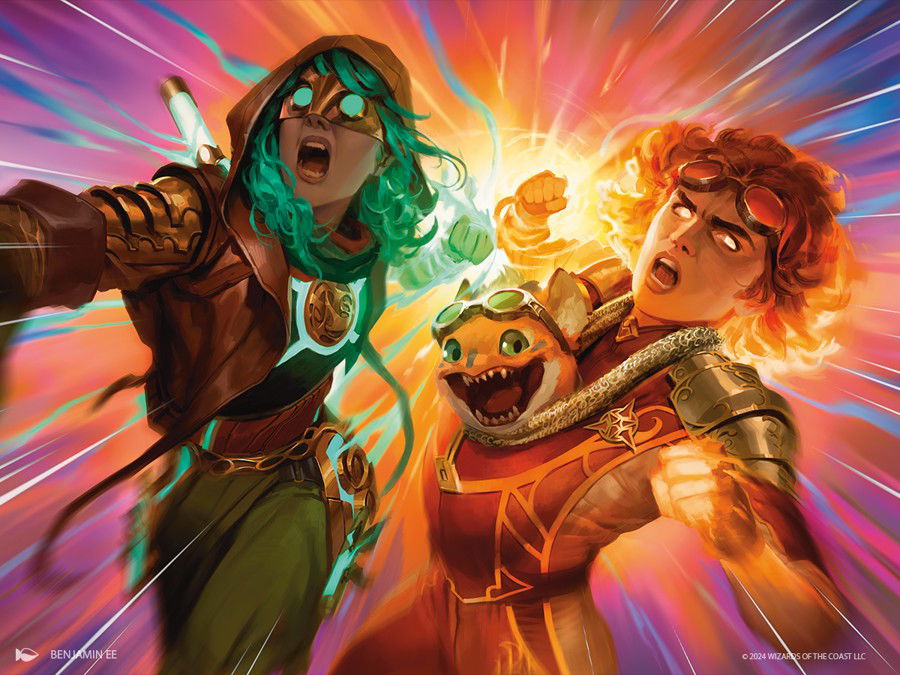
Loot's Journey Through the Planes
Lost Caverns of Ixalan: Loot doesn't show up directly in this set, but it is an important starting point. This set reintroduced the Fomori into the lore as the Kisik - giant, aggressive colonizers.
Outlaws of Thunder Junction: this set shows Jace and Vraska finding Loot, who was asleep in Maag Taranau, an ancient Fomori installation. Surrounded by arcane inscriptions and murals of giants, Loot awakens and straight away reveals his unique abilities: he can see and manipulate Omenpaths, and, as such, he becomes an important piece in the Multiverse.

The Relationship Between Loot, Jace, and Vraska
After Loot was rescued by Jace and Vraska, he embarks on the adventures we've all seen so far. However, nothing is as simple as it seems: the couple is struggling with the grief their own compleation caused, and are also ashamed of what they did under the influence of the oil. Thankfully, when New Phyrexia fell, they managed to revert the corruption of the oil, thanks to Jace and his mother.
Ad
And, when they returned, there was another surprise: Vraska had lost her spark. Once they lost their sanity and their home, their priorities changed. That's when Loot comes in. To Vraska, he represents the possibility of a new beginning with Jace - a lighter future, centered around family. To Jace, he is an opportunity to put the Multiverse back in its tracks.
But, what seemed to be an affectionate relationship eventually turns dark. In the end, Loot is already scared of Jace, who constantly puts him in a sort of "sleep" so he can explore his abilities more freely. His relationship to Vraska is a bit more solid, as she starts to protect him more and more.
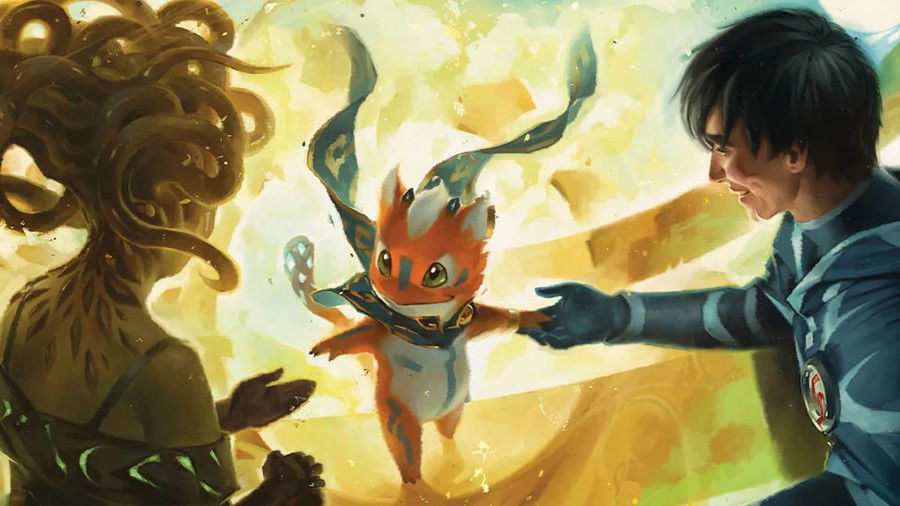
Duskmourn: Loot is captured by Valgavoth, a powerful entity that is also interested in his special abilities. Duskmourn is dark and terrifying, as Valgavoth has extended his influence over the entire plane.
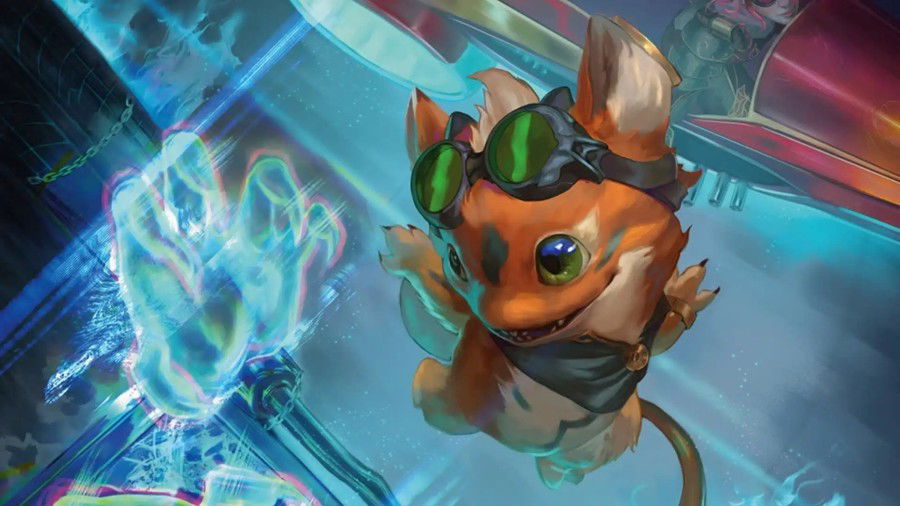
Aetherdrift: in this plane, Loot is forced to compete for the Speed Demons in the Ghirapur Grand Prix. This group is led by Winter, Valgavoth's herald. This high-speed race showcases how Loot can aptly navigate complex, dangerous challenges. And it is in this place that he finds Chandra Nalaar and is eventually rescued by Jace and Vraska, who set him back on their original mission.
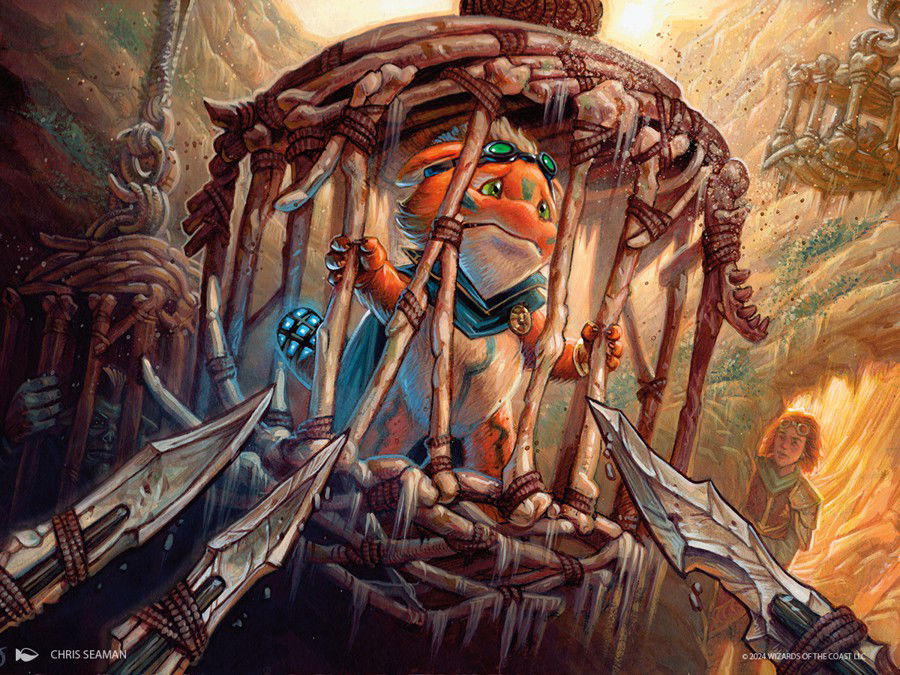
Tarkir: Dragonstorm: at the climax of this story, we see Loot and Vraska again, right after they escape through an Omenpath. Alongside Elspeth and Narset, they arrive, disoriented, at a temple, in front of an abnormally dark sky - the result of the army of dragons led by Sarkhan Vol.
Ad
Faced with this imminent threat, Elspeth tells Vraska to protect Loot and leave. Vraska, using her magic to disguise herself and Loot, disappears and makes sure he is safe. Meanwhile, Elspeth and Narset get ready for combat.
Symbolic/Visual Connections
Loot has the same physical traits all Fomori have: horns, fur, a blue orb in his tail. He can interact with Fomori artifacts straight away. His name itself, Loot, has two meanings: treasure, and spoils - a being between ruins and rebirth. The Fomori themselves reference real myths, so we can try to understand these mysterious creatures through our own stories.
Celtic Mythology and the Fomori
In Irish mythology, the Fomóire were deformed giants, an ancient race that represented chaos, darkness, and nature's destructive side. They were described as the first mythical beings to inhabit Ireland, and were constantly in conflict with the Tuatha Dé Danann, ancient gods and heroes. Balor, the most fearsome among them, was killed by his grandson, Lugh.
In some versions, the Fomori are considered sea giants. In others, primordial gods - not entirely evil, not entirely good, but, above everything, they were chaotic and essential.
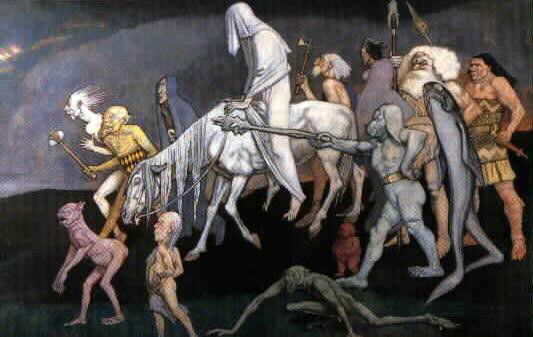
In Magic: The Gathering, the Fomori are a lost civilization. Loot might be the only way forward: he may not be a hero that will destroy chaos, but the one that understands it. His name makes us think of a powerful, arcane, forgotten civilization - marked by mysticism and ruins.
Ad
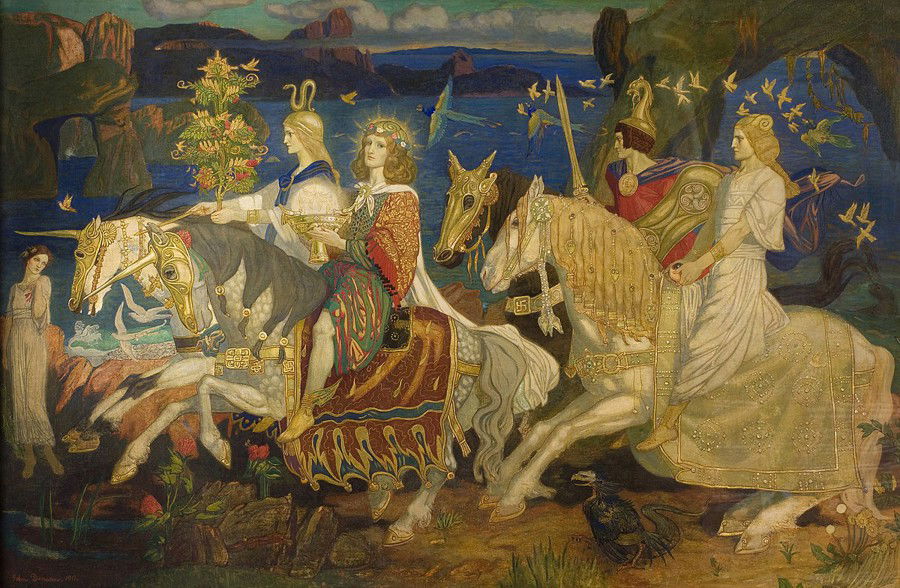
References Even in the Name
The word "Fomori" seems to be inspired by the Fomóire, but its origin is uncertain. One of the possibilities is the pre-Celtic word fo-mor, which can mean:
- "below the sea" (fo = below, muir = sea), suggesting an abyssal or subaquatic origin;
- "ghosts of the underworld" or "death demons", which indicates this race is threatening, and "otherworldly".
The Fomori vault where Loot is found is called Maag Taranau, a name that combines words from old Irish (mag, "planes"), and welsh (taranau, "thunder"). It once again references the Celtic, mythic inspiration for this lore.
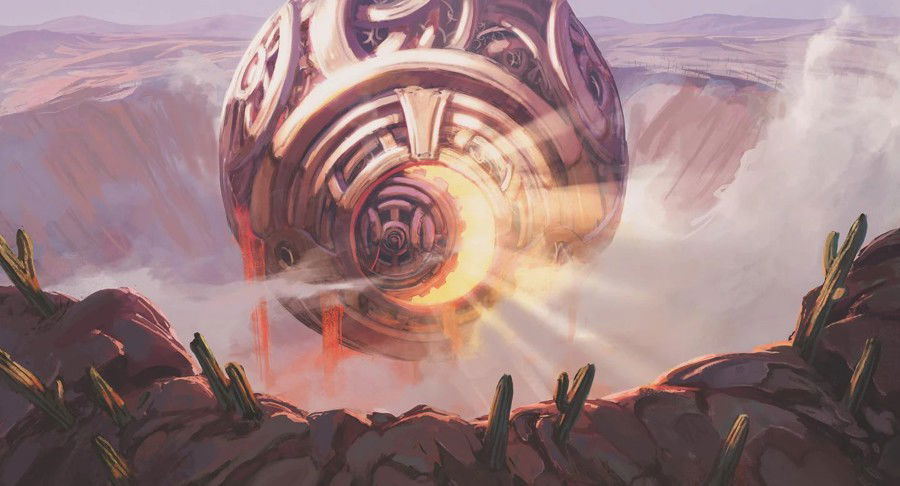
Ruins and Disappearance
Ad
Just like the Fomóire, who were beaten and forgotten by time, Magic: The Gathering's Fomori are a lost civilization - only ruins, legends, and sleeping descendants, like Loot, are left.
Open Paths: The Future of Loot and the Fomori
Ir is still an unexplored plane, and has a lot of potential for new stories. Loot, already a central figure in this post-Omenpaths Multiverse, is the link between worlds, characters, and plots. His curious gaze is throwing light on paths even the Multiverse seems to need to learn how to follow.
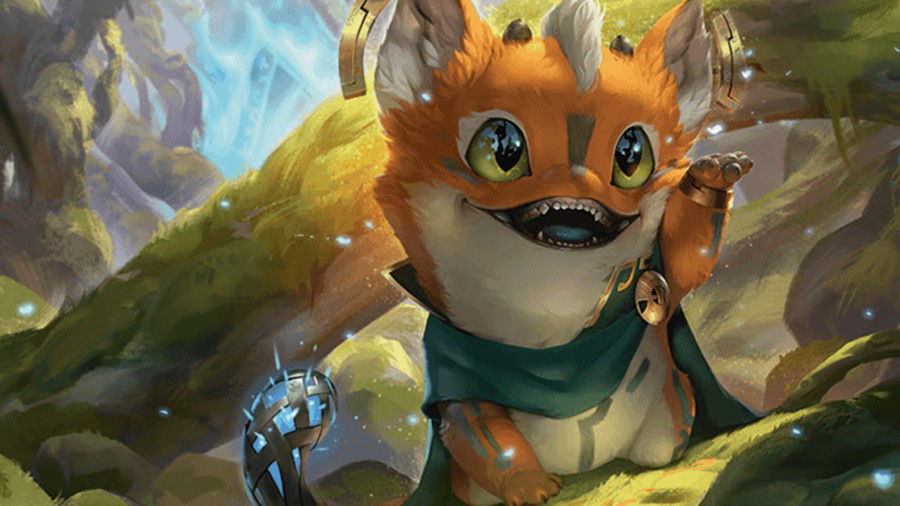
Final Words: The Link Between Chaos and Hope
Loot is not only a charming mascot. He is the key to a great past and the way to a constantly evolving future. His journey connects ruins and dreams, chaos and reconciliation - and shows that even the smallest of beings can carry the fate of an entire Multiverse.
What about you? How do you think our orange fur ball will deal with his past... and his future? Tell us all about it in our comment section below!

Ad
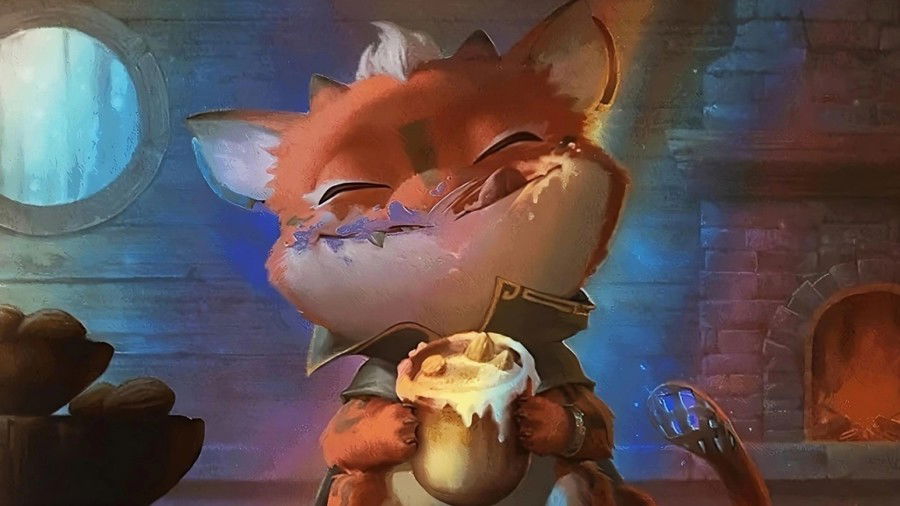




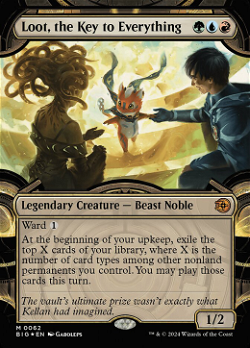
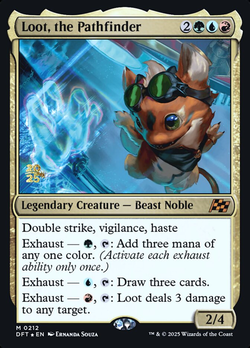
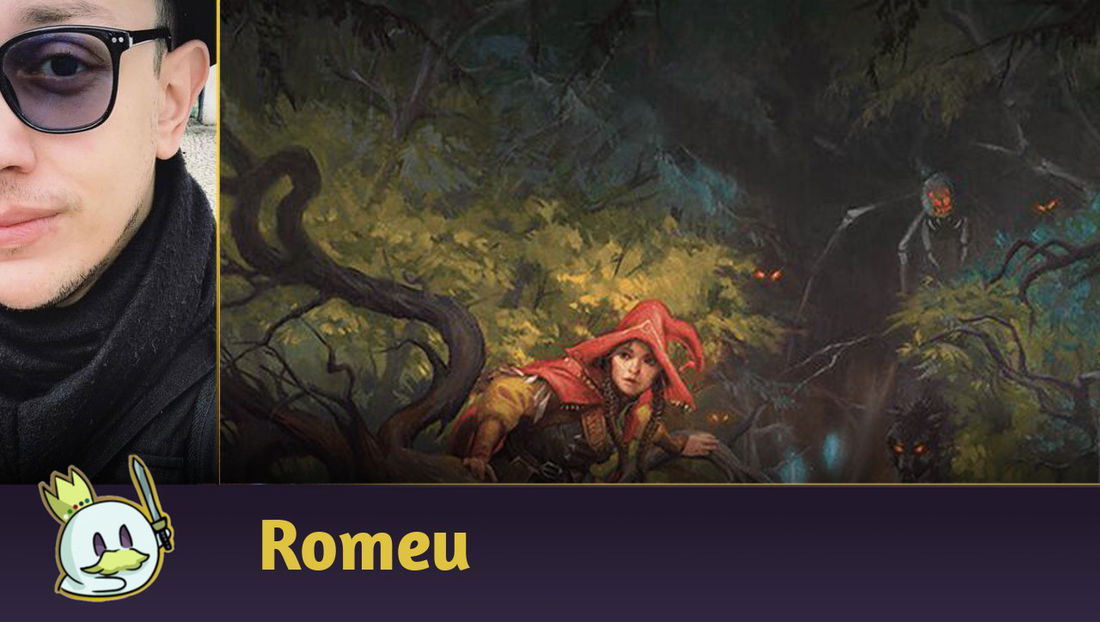

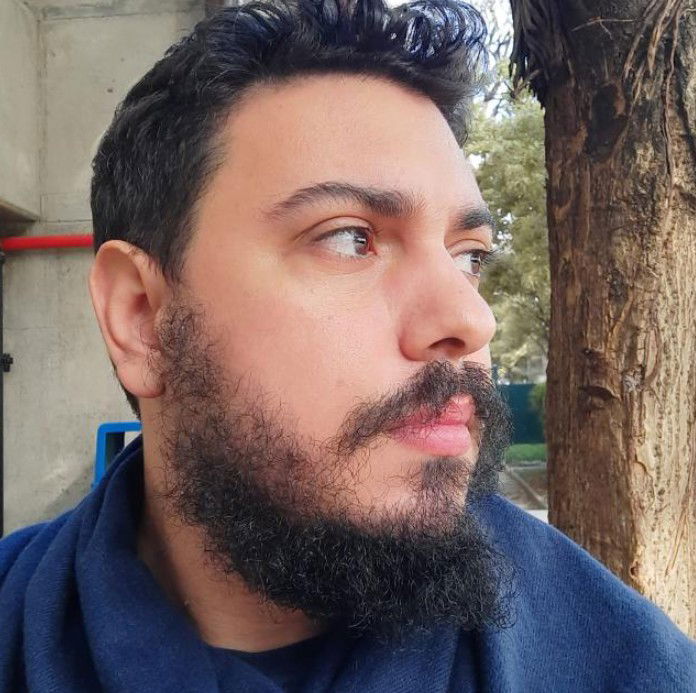
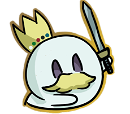
— Comments0
Se el primero en comentar